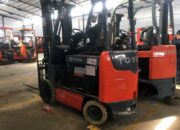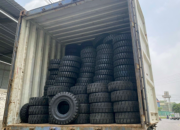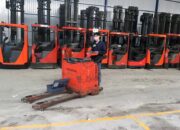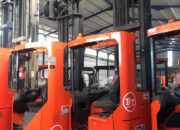Comprehensive Solutions for Volvo Forklift Engines: Supply, Replacement, and Repair
In today’s industrial age, forklifts play a crucial role in transporting and handling goods in warehouses, factories, and ports. Ensuring continuous and efficient operation requires the use of high-quality engines. Among the renowned brands in industrial engines, Volvo stands out for its reliability and superior performance. In Vietnam, SAMCOVINA JSC is a leading provider of comprehensive solutions for Volvo forklift engines, offering services from supply and installation to replacement and repair.

Professional Supply and Installation of Volvo Engines
With a team of skilled technicians and state-of-the-art equipment, SAMCO Vina proudly supplies and installs the most reliable Volvo engine models for forklifts such as the Volvo Penta TAD762VE, TAD1360VE, TAD1171VE, TAD871VE, among others. These engines are manufactured on advanced production lines by Volvo, meeting stringent standards for quality, environmental protection, and safety.
Key advantages of Volvo forklift engines include:
– High Power Output: Ranging from 162 to 613 horsepower to suit various types of forklifts.
– Fuel Efficiency: Advanced internal combustion technology coupled with efficient electronic control systems.
– Longevity: Durable construction ensures up to 20,000 hours of operation.
– Eco-Friendly: Compliant with Euro V emission standards to help maintain a clean environment.
– Quiet Operation: Reduced noise pollution due to smooth running.
Our professional installation process ensures that the supply and assembly of your Volvo forklift engine are conducted swiftly, safely, and accurately while adhering to all strict quality and performance standards.
Expert Engine Replacement Services
Over time, all engines degrade and need replacement to maintain effective operation. At SAMCO Vina, we offer expert engine replacement services through a simple three-step process:
- Assessment: Our technicians will inspect the current engine’s condition to recommend the optimal time for replacement.
- Selection: Based on usage needs, forklift power requirements, and working conditions, we will advise you on selecting the most suitable new Volvo engine that meets all performance criteria while being cost-effective.
- Professional Replacement: Our team will remove the old engine and install the new one following precise technical procedures to ensure safe and smooth operation immediately after replacement.
Post-replacement checks by our engineers guarantee that your forklift operates stably at maximum efficiency.
Professional Repair and Maintenance Services
In addition to replacement services, SAMCOVINA JSC offers comprehensive repair and periodic maintenance services for Volvo engines:
– Repair Services: We follow standardized procedures using modern equipment along with genuine Volvo parts. Adhering strictly to manufacturer repair protocols ensures high performance and longevity post-repair.
– We also provide rapid repair services to quickly address issues with your forklift engines minimizing downtime risks. Promptly resolving minor problems can prevent major damages saving costs for businesses.
– Maintenance Services: Regular maintenance according to manufacturer recommendations ensures optimal engine performance extending its lifespan significantly.

Our periodic maintenance process includes:
– Thorough inspection of the engine components
– Replacement of parts & oils with genuine Volvo products
– Adjustment & calibration of operational parameters
– Detailed cleaning of all parts
– Early detection & rectification of potential issues affecting performance & longevity
Regular maintenance keeps your forklift’s engine running at peak efficiency reducing fuel costs preventing breakdowns prolonging equipment life significantly.
Your Trusted Source for Volvo Forklift Engine Solutions
At SAMCOVINA JSC., we are committed to delivering top-notch service across all aspects related to Volvo forklift engines. All our products are 100% genuine imported directly ensuring reliability & superior performance.
For more information or inquiries about our services feel free to contact us!







